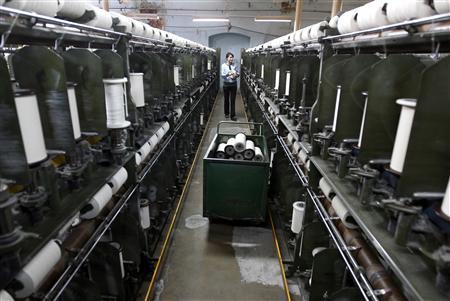
However, “there still exist problems like lack of financing for textile firms when it comes to the need for innovation in the country’s largest export sector,” said a report released by the Innovation and Technology Centre of Lahore School of Economics based on data collected from 125 firms.
In the paper, innovation-related behaviour has been linked to export behaviour.
According to the survey, a large percentage of these firms were exporting most of their output (81-100%). They mostly make shipments to Europe and Asia.
The survey found that exporters turned out to be more innovative than non-exporters. However, funding for innovation can be a major issue for these firms.
In the survey, when asked about sources of funding for making innovations, a large proportion of firms reported that those ideas were financed solely by their internal resources (equity funds).
On the other hand, almost half of the firms said their innovative ideas were financed by using their internal sources as well as taking loans from banks. A very small percentage of firms stated that their schemes were financed by using both internal resources and aid from the government.
Looking at the sources of funding for innovation across different sectors, most of the garment manufacturing firms were found to be self-financed whereas almost half of the textile manufacturing firms financed their innovation activities through assistance from financial institutions.
In the survey, it was found that a significant amount of innovation had been directed towards improving the quality of products and had also resulted in an increase in revenues.
Taking a sector-wise look, the innovation had led to improved quality of products for textile and readymade garment sectors besides reducing the cost of production for readymade garments and enhancing revenues for the textile sector. When inquired about the impact of various types of innovations on profits, a majority of firms reported that innovation in products resulted in higher profits while less than half of the firms claimed that innovation in technology/equipment resulted in higher profits. The incentives to innovate are particularly important for the firms. In the survey, when asked about the most significant factor driving innovation in their industry, a massive chunk of firms reported that the pressure to improve product quality was one of the most significant drivers of innovation followed by the desire for market leadership.
One simple measure of innovation is the purchase of machinery. Looking at the purchases of machinery by these firms, the survey found out that a large number of firms purchased new machinery and/or software.
A majority of firms in both the textile and readymade garment sectors said they purchased new machinery and the percentage was similar across sectors.
The timing of innovation is also important as over half of the firms said the innovation took place in the last one to five years. A majority of the innovating firms claimed that they were planning to introduce new technology again in the next 12 months.
More than half of the textile firms said they were planning to introduce new technology in the next 12 months. On the other hand, most of the readymade garment manufacturing firms were not planning to innovate in the next 12 months.
The survey added that 83% of firms reported that they introduced innovative ideas in the area of product manufacturing, 77% in marketing, 75% in processing, 63% in technology and 33% in the business model. A majority of both readymade garment and textile firms preferred adopting the already established innovation.
During the survey, managers of the firms said the two greatest barriers faced by them were financing and lack of innovation opportunities. A large number of firms said they did not have to keep their employees in order to adopt new technologies/software and a significant percentage of them claimed to have faced no resistance from their employees when trying to introduce innovation.
The report concluded that more incentives for innovation could be given by providing more sources of funding for the innovating firms in the form of aid from the government and assistance from financial institutions.
The writer is a staff correspondent
Published in The Express Tribune, August 26th, 2019.
Like Business on Facebook, follow @TribuneBiz on Twitter to stay informed and join in the conversation.


1729662874-0/One-Direction-(1)1729662874-0-165x106.webp)





1732084432-0/Untitled-design-(63)1732084432-0-270x192.webp)








COMMENTS
Comments are moderated and generally will be posted if they are on-topic and not abusive.
For more information, please see our Comments FAQ